

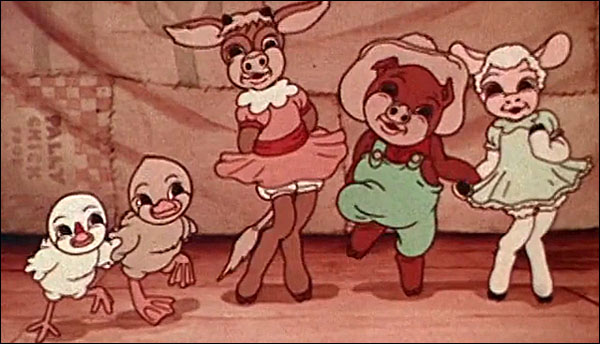
Today’s animator breakdown is an MGM Happy Harmony in two-color Technicolor!
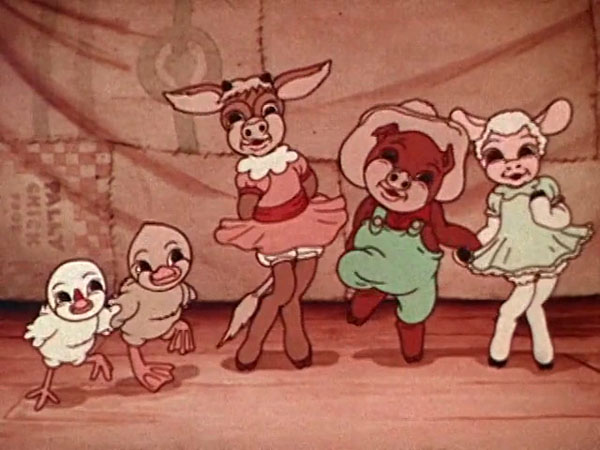
As some readers may know, several Happy Harmonies produced by Hugh Harman and Rudy Ising are available as animator breakdowns on Cartoon Research. These include, in chronological order, The Old Pioneer (1934), Toyland Broadcast (1934), The Calico Dragon (1935), Honeyland (1935), Alias St. Nick (1935), The Early Bird and the Worm (1936), Little Cheeser (1936), and Little Buck Cheeser (1937).
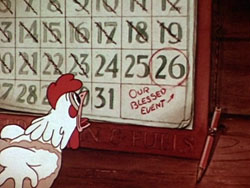
A nod to famous gossip columnist Walter Winchell’s slang for a newborn birth in his tabloids
The animators credited on the production draft are Bob Allen, Jim “Tony” Pabian, Bob Stokes, Carl Urbano, Cal Dalton, Pete Burness, Gil Turner, Joe D’Igalo, Frank Smith, George Grandpre, Tom McKimson, and a surprising inclusion with Lee Blair, husband to Mary Blair. At first, Lee began work at Harman-Ising as an assistant to Bob Allen, one of Harman-Ising’s top animators. Starting with The Lost Chick, Blair was assigned scenes to animate. For Barnyard Babies, Lee animated the young pony galloping onto the stage, using a broom as a hobby horse, accompanied by Bobby Heath and Charley O’Donnell’s 1909 hit tune “My Pony Boy.” (The pony’s recitation was provided by sound editor Fred MacAlpin, who was ailing from laryngitis but necessitated director Rudy Ising’s need for a raspy voice.)
Lee Blair stated in an interview how Harman and Ising prepared their stories: “They didn’t work with big storyboards like they do at Disney’s. They worked pretty well straight ahead off of a detail sheet—a bar sheet. They called them ‘detail sheets.’” Bill Hanna, once Harman-Ising’s ink-and-paint supervisor, helped write the detail sheets for Hugh and Rudy. Lee remembered: “From those detail sheets, they would make a set of exposure sheets, and you would be handed them as a scene.” Hanna also wrote songs for the Happy Harmonies: the original cutting continuity notes Bill and musical composer Scott Bradley as composers of the piglets’ song, “Pig Latin Love.” Sometimes, the Harman-Ising animators relied on live-action comedies as a reference in their scenes. Lee recounted: “We used Charlie Chaplin a lot. We’d get old Charlie Chaplin films, and we had a hand-cranked projector; I had it alongside my animation board…We’d crank his walks and pratfalls and study those.”
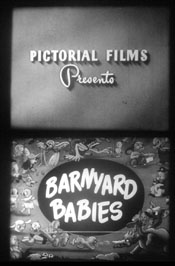
16mm home movie titles
Released generally to theaters on May 25, 1935, Barnyard Babies held its Los Angeles opening at Loew’s State and Grauman’s Chinese Theater from September 1 to 7. It played with the Clark Gable-Jean Harlow vehicle China Seas. Barnyard Babies marked the last Happy Harmony released in two-color Technicolor. When Harman-Ising switched to three-strip Technicolor during the production of their next Happy Harmony, The Old Plantation, the studio enlisted Blair to make color sketches in Hugh Harman’s unit “on the side.”
A decade after its release, Harman-Ising’s cartoons and a few others were issued into “reduction” 16mm prints for the home movie market by Hollywood Film Enterprises in Glendale and Pictorial Films in New York. H-I faced legal trouble in March 1946 when Loew’s Incorporated, MGM’s subsidiary, filed a lawsuit against Hugh Harman Productions, Hollywood Film Enterprises, and its president, William Horsley, for copyright violation. Despite their case against Harman and Hollywood Film Enterprises, rental prints of Barnyard Babies distributed by other companies were sold in non-theatrical camera houses in 16mm as late as 1950.
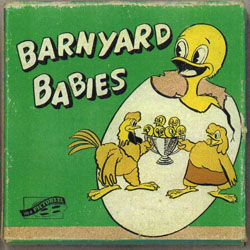
Regarding the scene assignments following the animator breakdown video, scene 18 is a joint credit between Frankie Smith and Pete Burness; Smith possibly animated the barnyard babies taking their bow, and Burness animated the piglet couple entering the stage. The production papers credit scenes 43 to 47 to “Tony and group.” Based on the footage attributed to Pabian in this film and the aforementioned Happy Harmonies with surviving production drafts, it seems logical that Jim was assigned these final scenes himself—Pabian was reputable for his speed in producing footage, with the help of at least three assistants, according to Ising.
The production draft is courtesy of Michael Barrier, who photocopied several papers from Rudy Ising’s collection in 1979; the whereabouts of the originals still need to be discovered as of this writing. Some handwritten notes in the draft are faint and indecipherable, as a few Harman-Ising production papers reveal on Cartoon Research. However, after close examination and a slight tweak in the picture contrast on the pages, the artist’s credits are properly clarified on the breakdown video. (At least one other set of production papers from The Chinese Nightingale is known to survive but is currently inaccessible.)
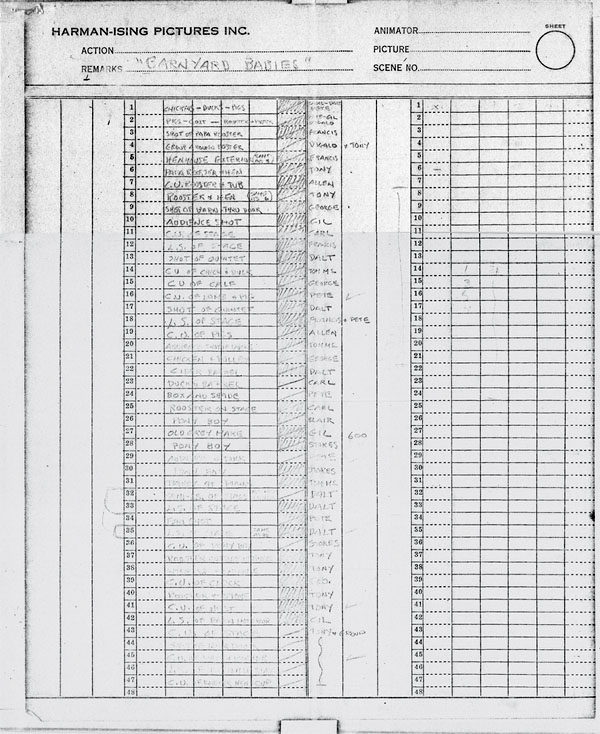
• Thanks to Michael Barrier, Keith Scott, and Didier Ghez for the information used in this post.